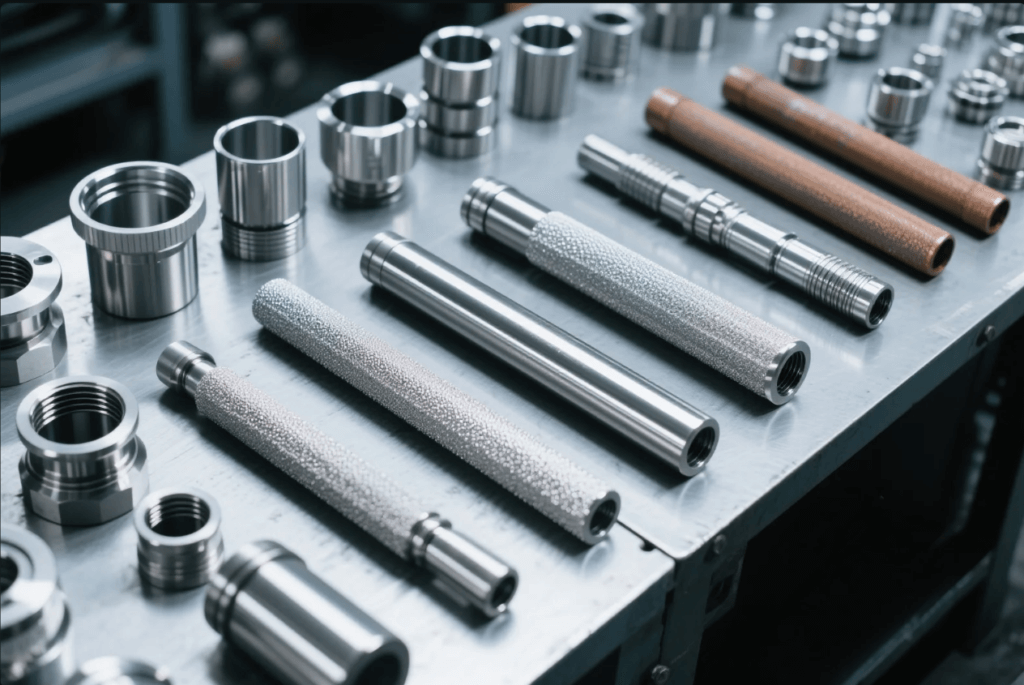What is CNC machining?
1. Definitions
CNC machining is the use of pre-programmed applications of control tools and equipment to manufacture products. Just like robots, CNC machinery helps humans accomplish specific tasks. Compared to manual labor, CNC machining improves accuracy, speeds up production, increases safety and efficiency, and most importantly, saves money.
2.Working Principle
Design Creation: Defining part specifications by creating a CAD (Computer Aided Design) model.
Programming: Using CAM (Computer Aided Manufacturing) software to convert the CAD model into a CNC program, generating the code that the CNC machine follows.
Machine Setup: Prepare the CNC machine with the necessary tools and materials, then calibrate the machine to ensure accuracy.
Execution: The CNC machine follows the program and directs the tools to cut, shape and finish the material to the exact specifications of the CAD model.
QUALITY CONTROL: The finished product is inspected to ensure that it meets the required tolerances and specifications.
Differences and advantages over conventional processing
1. Higher manufacturing precision
CNC machining offers greater precision than traditional manual machining. Computerized programming eliminates human error and enables highly accurate and repeatable production. This is critical for industries that demand the highest level of specification accuracy.
2. Significant increase in productivity
CNC machines are capable of running continuously at high speeds, dramatically reducing production time. Automation of the machining process means that machines can run unattended, enabling night-time and lights-out manufacturing to maximize productivity.
3. Repeatable with good tolerance control
A key advantage of CNC machining is the ability to maintain consistent quality in mass production. CNC machines can operate at very tight tolerances, ensuring that each part meets exact specifications. And that’s the kind of thing that’s hard to achieve with manual machining.
4. Good material optimization
CNC machining minimizes material waste, reduces scrap generation and lowers production costs by optimizing cutting paths and depths. This efficient use of materials saves money and is environmentally friendly.
5. High complexity and flexibility
CNC technology can handle complex designs and geometries that would be difficult to achieve in manual machining. CNC technology can produce advanced components with a high level of detail and precision.
6. Seamless integration with CAD/CAM
CNC machine tools seamlessly integrate with CAD (Computer Aided Design) and CAM (Computer Aided Manufacturing) software to streamline the workflow from design to production. This integration allows for quick adjustments and iterations, increasing overall efficiency and reducing time to market.
The Core Impact of CNC Machining on Product Development
1. Speed and efficiency
CNC machining significantly increases the speed and efficiency of the product development cycle. It simplifies the time-consuming nature of traditional manufacturing, reduces the risk of human error and defective rework, accelerates development cycles and saves resources, making the process more sustainable.
2. Precision and consistency
The outstanding ability of CNC machining to execute complex designs with high precision is critical to industries such as aerospace and medical devices, ensuring that each part conforms to the CAD model.
3. Flexibility and complexity
CNC machining adapts to a wide range of materials, produces any shape or feature modeled in CAD software, meets customization needs, reduces manufacturing steps, simplifies the production process and maintains component integrity.
4. Realization of complex geometric designs
The advanced capabilities of CNC machines make complex designs a reality. Complex designs with a high level of detail that were previously difficult to achieve with conventional machining or by hand can now be accurately accomplished with CNC machining.
5. Mass customization becomes possible
CNC machining can be adapted to mass produce custom or bespoke projects, providing a competitive advantage in today’s market.
6. Significant cost reduction effect
Integrated CNC machining optimizes manufacturing processes, reduces material waste and lowers labor costs.
summarize
Undoubtedly one of the most important industrial technologies of the 21st century, CNC technology has driven technological advancements worldwide, representing a major step forward with greater precision, efficiency and flexibility than traditional machining methods. By utilizing CNC technology, manufacturers can produce higher quality, more accurate and consistent parts, ultimately improving manufacturing processes and product performance.
If you’re looking for an experienced CNC manufacturer, then SCZY is the right choice, with a team well-equipped to deliver quality CNC solutions. For more information or to discuss your machining needs, please feel free to contact us.






